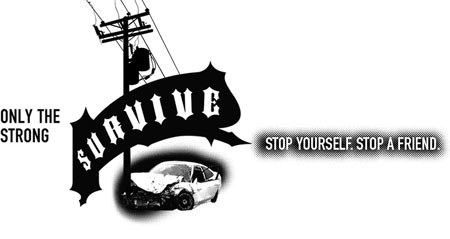
Hard Facts
Hard Facts: Driving Crash and Fatality Statistics — Teen Specific
What's the deal with teens and car crashes?
- Car crashes are the No. 1 killer of teens in the U.S.
- Teens are four times more likely to die or be injured in a car crash than older people.
- In 2003, teens accounted for 10% of the U.S. population but were involved in 13% of car crash fatalities.
- Males are twice as likely as females to die or become injured in a car crash.
And there's more:
- The crash risk is particularly high during the first year teens drive because they're new behind the wheel. Without years of driving practice, teens are more likely to make mistakes.
- Most teen crashes occur on the weekends, when teens are too busy having fun to pay attention to their driving. Teens tend to underestimate or not recognize dangerous situations.
- Teens are more likely to speed, run red lights, make illegal turns, ride with an intoxicated driver, and drive after using alcohol or drugs.
Teens are already at high risk when they're sober behind the wheel. Driving under the influence (DUI) would put them at an even higher risk of being killed or injured. Protect your teens. Let them know the facts.
What other facts do my teen and I need to know?
- At all levels of blood alcohol content (BAC), the risk of being in a car crash is greater for teens than for older drivers. The effects of alcohol are a lot stronger for teens than for adults because teens are still growing and developing.
- Alcohol-related car crashes make up one-third of all fatal crashes.
- Eight teens die every day in DUI crashes.
- In 2005, 7420 teens died or injured in DUI crashes. Teen fatalities make up one-fifth of all alcohol-related crashes, though licensed teens make up only about 6% of the overall licensed population.
- Alcohol involvement in crashes peaks at night (9 p.m. to 6 a.m.) and is higher on weekends than on weekdays. In 2006, 39% of drivers killed on weekends (6 p.m. Friday to 6 a.m. Monday) had BAC levels at or above 0.10 %, compared with 21% of drivers killed on weekdays.
- Males are almost twice as likely as females to drive under the influence of alcohol.



